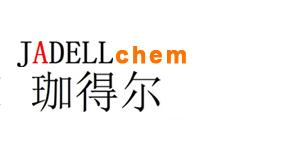Recombinant Human Interleukin-1 beta 是一种多肽细胞因子,在炎症和免疫反应中起关键作用
Synonyms
rHuIL-1β; Catabolin; IL1F2; IL-1 beta; IL1B ; 重组人白细胞介素-1β
Species
HumanSource
E. coli Accession
P01584 Gene ID
3553 Molecular Weight
Approximately 17.3 kDa AA Sequence
APVRSLNCTL RDSQQKSLVM SGPYELKALH LQGQDMEQQV VFSMSFVQGE ESNDKIPVAL GLKEKNLYLS CVLKDDKPTL QLESVDPKNY PKKKMEKRFV FNKIEINNKL EFESAQFPNW YISTSQAENM PVFLGGTKGG QDITDFTMQF VSS Biological Activity
The ED50 is <1.0 pg/mL as measured by murine D10S cells, corresponding to a specific activity of 1.0 × 109 units/mg. Appearance
Lyophilized powder. Formulation
Lyophilized after extensive dialysis against PBS. Endotoxin Level
<0.2 EU/μg, determined by LAL method. Reconstitution
Reconstitute the lyophilized recombinant Human Interleukin-1 beta (rHuIL-1β) to 100 µg/mL using ddH2O or diluted with PBS. Storage & Stability
Lyophilized recombinant Human Interleukin-1 beta (rHuIL-1β) is stored at -20°C. After reconstitution, it is stable at 4°C for 2 weeks or -20°C for longer. It is recommended to freeze aliquots at -20°C or -80°C for extended storage. Shipping
Room temperature in continental US; may vary elsewhere. Background
Recombinant Human Interleukin-1 beta (IL-1β) is a non-glycosylated polypeptide chain containing 153 amino acids with a molecular mass of 17000 Daltons. The purified human monocyte derived IL-1 (mIL-1), a mixture of the two IL-1 forms but predominantly consisting of IL-1 beta, modulates eosinophil oxidative metabolism and enzyme secretion. Although the two major species of IL-1 (IL-1 alpha and IL-1 beta) have identical specific activities on T cells, the selective effects of human recombinant IL-1 (hrIL-1) alpha and hrIL-1 beta are reported on eosinophil function. Recombinant Human Interleukin-1 beta (hrIL-1 beta) causes a significant increase in arylsulfatase secretion (235.4±29% of resting secretion, P≤0.01) and beta-glucuronidase secretion (135.8±9.6% of resting secretion, P≤0.02) similar to mIL-1, Recombinant Human Interleukin-1 alpha (hrIL-1 alpha) has no effect on enzyme secretion. A mixture of hrIL-1 alpha and hrIL-1 beta reproduces the ability of mIL-1 to inhibit the oxidative response to suboptimal doses of phorbol myristate acetate (PMA). When eosinophils are separated into subpopulations by density gradients, eosinophil responses to IL-1 differ among the populations[1]. Members of the IL-1 family such as IL-1α and IL-1β are pro-inflammatory cytokines. Increased IL-1α and IL-1β levels have been detected separately in cigarette smoke (CS)-treated animals and inhibition of the respective signaling pathways result in anti-inflammatory activity[2]. |



